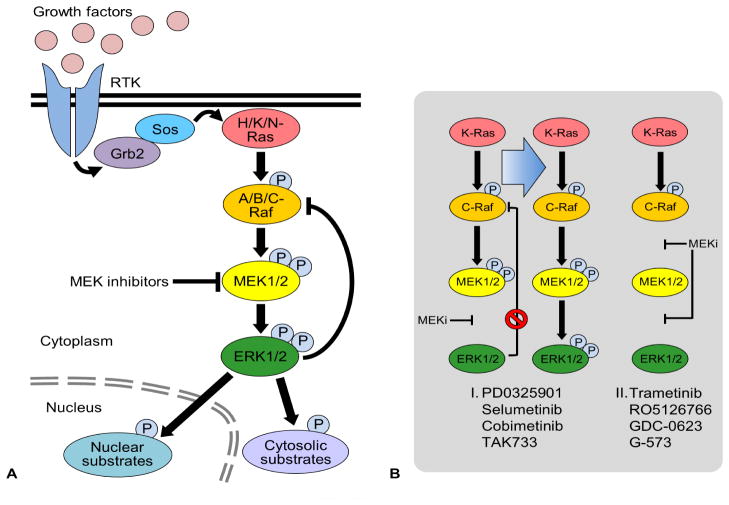Figure 1.
The Raf/MEK/ERK pathway and MEK1/2 inhibition. (A) Extracellular stimuli such as growth factors regulate diverse physiological processes by activating the cell surface receptors, e.g., receptor tyrosine kinases (RTK), which relay the signals to the three-layered kinase cascade, Raf/MEK/ERK, typically via the adapter protein, Growth factor receptor-bound protein 2 (Grb2), the guanine nucleotide exchange factor, Son of sevenless (Sos), and the small GTPase, Ras. Upon activation, ERK1/2 not only activate/inactivate various cytosolic and nuclear substrates but also feedback-inhibit Raf activity to modulate the pathway activity in cells. (B) MEK1/2 inhibition relieves ERK1/2-mediated feedback inhibition of C-Raf by inactivating ERK1/2. Certain MEK1/2 inhibitors (I) increase the interaction between MEK1/2 and C-Raf, and, this can promote MEK1/2 phosphorylation by C-Raf, resulting in the rebound of MEK/ERK activity in RAS mutant tumors. However, newer MEK1/2 inhibitors (II) that avoid this feedback rebound of MEK/ERK activity in RAS mutant tumors are becoming available (see text for details).

